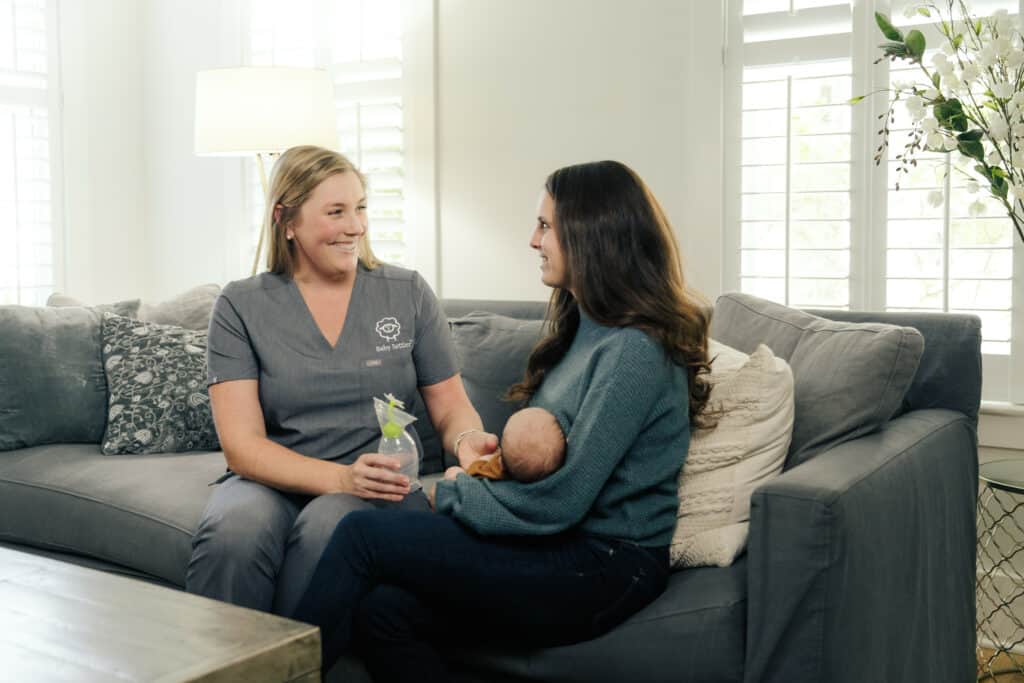
It’s 8 pm and you’re finally getting a chance to sit down and relax after a long day. You’re just about to take a sip of your well-deserved glass of wine when you hear it… the sound of your baby crying. You go to their room only to find that they’re wide awake and ready to party. What gives? If your baby is staying up way past their wake window, it can be frustrating, tiring, and even downright confusing. But why does this happen and what can you do about it?
What is a Wake Window?
A wake window is the period of time during the day when a baby is awake and alert. This is the time when they are most responsive to stimulation and learn best.
Sticking to wake windows is crucial for a baby’s development. This time is when they are most responsive to learning. Staying up past their wake window can make them overtired and less likely to absorb new information. If your baby is staying up past their wake window, try to limit stimulation and keep them calm. You can also try moving their bedtime earlier to see if that helps them stay within their wake window.
It is also important for babies to stay within their wake window because it helps them to regulate their sleep patterns. When babies are first born, they have a very limited capacity to regulate their own sleep patterns and need help from their parents to do so. By staying within their wake window, they are able to regulate their sleep patterns better and get the rest they need. Additionally, this can help to prevent night waking and help them to sleep through the night. If your baby is struggling to stay within their wake window, you can do a few things to help them.
First, try to keep them awake during the day by providing stimulating activities. Second, make sure they are getting enough food and drink during the day so that they aren’t waking up due to hunger. Finally, if all else fails and your baby is consistently staying up past their wake window, it may be time to move their bedtime earlier.
How to Create a Wake Window
If your baby is staying up way past their wake window, it’s important to take action. This can be a sign that they’re not getting enough sleep, which can lead to health and developmental problems. There are a few things you can do to create a wake window for your baby. First, make sure they’re getting enough sleep during the day. If they’re napping well, they’re more likely to be able to sleep at night. Second, create a bedtime routine that includes winding down for 30 minutes before sleep. This will help them to transition from being awake to asleep. Finally, make sure the environment in their bedroom is conducive to sleep, with dark curtains and a white noise machine to help them drift off.
How Do You Know When Your Baby’s Wake Window is?
Every baby is different, but typically, your baby will be the most awake between 10 a.m. and 2 p.m. In the early morning and late night, they will be less awake and more prone to fussiness. At night, between 10 p.m. and 6 a.m., they will usually be asleep despite continued stimulation. For more help on establishing a routine and wake windows, check out my sleep courses.
As they get older, their wake windows expand. By about 6 months, your baby’s wake window will extend toward the evening, and by 12 months, it will encompass most of the afternoon. So, what do you do with this awake time?

How to Make the Most of Your Baby’s Awake Time
A few good activities for your baby’s awake time include: reading together, playing with toys one at a time, singing songs, having bathtime, going for walks, or just exploring the house. As your baby gets older, they can help you check things off the list or help you prepare the things you need for the activity.
A nap routine is also ideal for your baby’s awake time. Dividing up their nap time into segments — a song, some light massage, and then a nap — helps them learn to transition to sleep. As they grow, you can add in quiet activities such as reading, just lying next to them quietly, or playing with a mirror. Always make sure to end your baby’s nap routine at their awake window.
You can also make use of your baby’s awake time by helping you get other things done. When you are able, try scheduling some baby activities during your baby’s awake windows. This will allow you to get other work done or even take a little time for yourself. You may find that your baby is happy to play by themselves with some toys on the floor near you or in their crib while you do work at the kitchen table.
Here are some of our favorite toys for babies to play with during their wake windows:
1. Push and Pull Toys
There are so many great push-and-pull toys on the market for babies! We particularly like toys that have lots of textures and colors, and allow babies to pull and push to find different sounds, shapes, and sights. Lovevery has a bunch of great push-and-pull toys. We love Lovevery because their toys are designed for each stage of development. You can also even get a subscription to their toy boxes with toys designed for each stag, from infancy through toddlerhood and beyond.
2. Tons of Textures
Babies’ senses are exploding with new sensations during the first year, and their fingers are a great way to feel textures! For infants, it’s great to have toys with multiple textures all over them, so they can touch, rub, and grip various spots on the toy. The Bumpy Ball is a fantastic example of a toy with lots of texture all over. It’s got bumps that help with baby’s reaching, grasping, and transferring, as well as, multiple textures and materials that help engage a baby’s tactile sensitivity.
3. Loud Toys
Babies love loud toys- think rattles and drums! Try putting these near your baby’s ear. Toys with light-up buttons and sounds are huge hits for infants and toddlers alike. One of our favorite loud, light up toy is the Baby Einstein Take Along Musical Toy. It’s small, portable, and great to take with you to keep your baby entertained on errands out of the house.
It can be incredibly frustrating when your baby seems to defy all logic and stay up way past their bedtime. But as frustrating as it may be, it’s important to remember that there are a few potential reasons why this might be happening. Maybe they’re not getting enough sleep during the day, or maybe they’re overtired and their wake windows are off. Regardless of the reason, there are a few things you can do to try to get them back on track. First, make sure they’re getting enough daytime sleep. Second, try to stick to a routine. And finally, if all else fails, consult with a sleep specialist.



